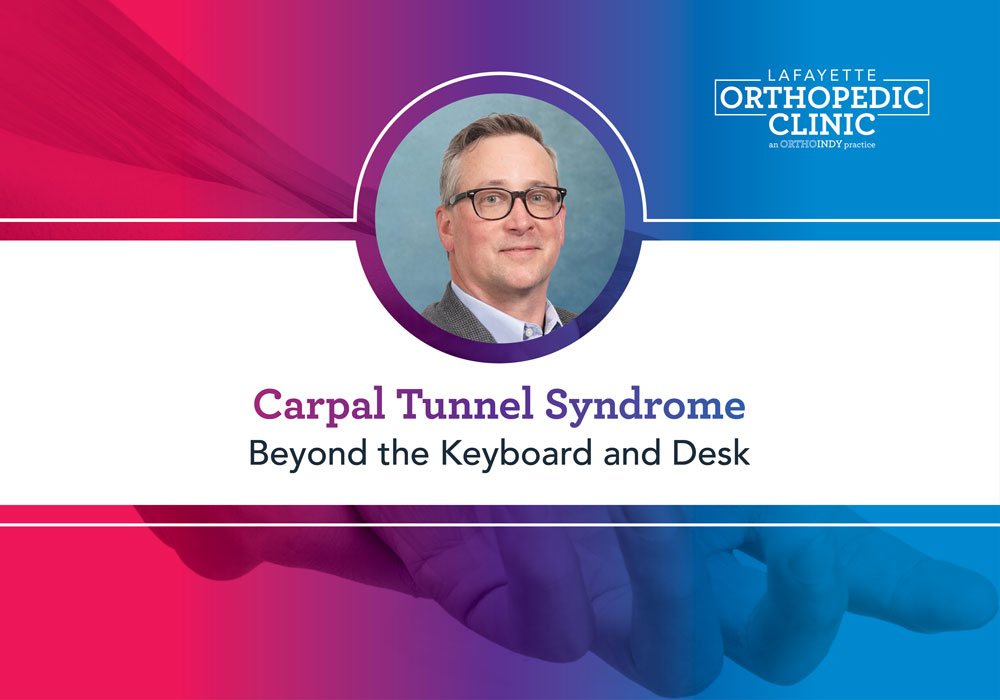THIS POST IS PART OF THE ULTIMATE GUIDE TO HAND, WRIST AND ELBOW INJURIES
During a fall, it’s human instinct to break the fall with your hands. However, the force can sometimes travel up your forearm bones and dislocate your elbow or break the smaller bone in your forearm, also called the radius.
The forearm has two bones, the radius and the ulna. The radius is the smaller of the two bones in the forearm (lower arm). A fracture of the radial head occurs when the radius is fractured near the elbow. The radial “head” is the pointy end of the radius where it meets the elbow.
In some cases, a radial head fracture requires immediate attention. Call 911 or go to your nearest emergency room. OrthoIndy Trauma physicians treat patients at St.Vincent Indianapolis Level I Trauma Center. In less severe radial head fractures, OrthoIndy also has urgent care clinics conveniently located throughout Indianapolis.
Radial head fracture symptoms
- Swelling in the elbow joint
- Pain on the outside of the elbow
- Difficulty bending or straightening the elbow
- Inability to turn the forearm
Physician examination
To determine whether you have a radial head fracture, your physician will ask you for a complete medical history and conduct a physical examination. An X-ray can confirm the diagnosis.
MAKE AN APPOINTMENT WITH AN ORTHOINDY SPECIALIST
What is the treatment for a radial head fracture?
Treatment for a radial head fracture depends on how far out of normal position the bones are. Radial head fracture treatment is determined by classification.
Radial head fracture classification
Type I fractures
These type of radial head fractures are minimal and include small cracks in the bone but the bone pieces remain together.
- Nonsurgical treatment involves using a splint or sling for a few days, followed by an early and gradual increase in elbow and wrist movement
Type II fractures
This type of radial head fractures is apparent when the bones are slightly displaced and involve a larger piece of bone.
- A sling or splint may be used for one to two weeks, followed by range-of-motion exercises if the displacement is minimal
- Surgery may be necessary if small fragments of bone need to be removed to allow normal elbow movement
- If a fracture is large and bone is out of place enough, an orthopedic surgeon will attempt to hold the bones together with screws or a plate
- If a torn ligament is also apparent, surgery will also correct the soft-tissue injury
Type III fractures
Type III fractures include multiple broken pieces of bone.
- There is significant damage to the elbow joint and ligaments surrounding the elbow
- Surgery is always necessary for Type III fractures to remove or fix the broken pieces of bone and repair the soft tissue damage
- If the damage is severe, the entire radial head may need to be removed and replaces with an artificial radial head
- After radial head fracture surgery, early movement to stretch and bend the elbow is necessary to avoid stiffness
How long does it take for a radial head fracture to heal?
Radial head fracture recovery time depends on the severity of the injury and the treatment method your orthopedic surgeon determines best suit your needs. Regardless of the type of fracture and treatment used, early exercise to restore movement and strength in the elbow is necessary before resuming full activities.
Learn more about trauma care at OrthoIndy.
Schedule an appointment
Your well-being is important to us. Click the button below or call us to schedule an appointment with one of our orthopedic specialists. If your injury or condition is recent, you can walk right into one of our OrthoIndy Urgent Care locations for immediate care. For rehabilitation and physical therapy, no referral is needed to see one of our physical therapists.






